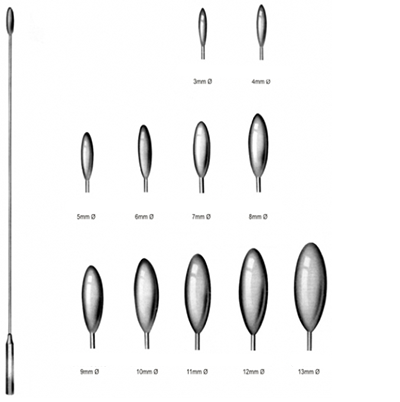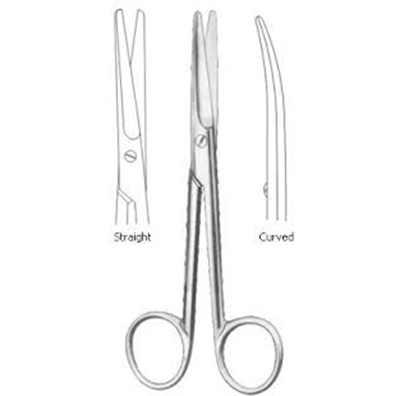What is its function? The Bakes’ Dilator was at first forwarded as an instrument to identify ampulla of vater (sphincter) or as a probe to check the retained stones after bile duct clearance. Now it is also a helpful tool for checking the patency of esophagus in pediatric age group and for probing pancreatic duct.
Caution: Although the Bakes’ is a blunt instrument, care must be taken while probing, as it is traumatic to the mucosa surrounding ampulla of vater (usually in cases of constriction or narrowing) and may lead to the formation of false passage in the first part of the duodenum.

Surgical Procedure: The Bakes’ Dilator is used during Cholidocolithotomy, a surgical procedure in which stones are removed from common bile duct, to look for retained stones. During Trans duodenal Sphincterolplasty (creation of a passage between CBD and duodenum in cases of obstruction by the presence of stone or sphincter dysfunction) the dilator is utilized for intubating pancreatic duct, as the duct may become stenosed if left ignored. In patient having carcinoma of hepatic duct, the dilator is again used to probe bile duct during resection of the diseased liver to prevent biliary leakage. In children, esophageal atresia which is an incomplete formation of esophagus is catered by esophageal replacement, during which Bakes’ is used to identify esophageal pouch.
Age Group and Available Sizes: The dilator is used on all age groups as already mentioned. The length available is 8 ¾ inches (222mm) or 11 ¾ inches (298mm). The diameter of the dilator varies from 1mm to 13mm.
The 8 ¾ inches long dilator with 8 mm diameter is available on online store.


